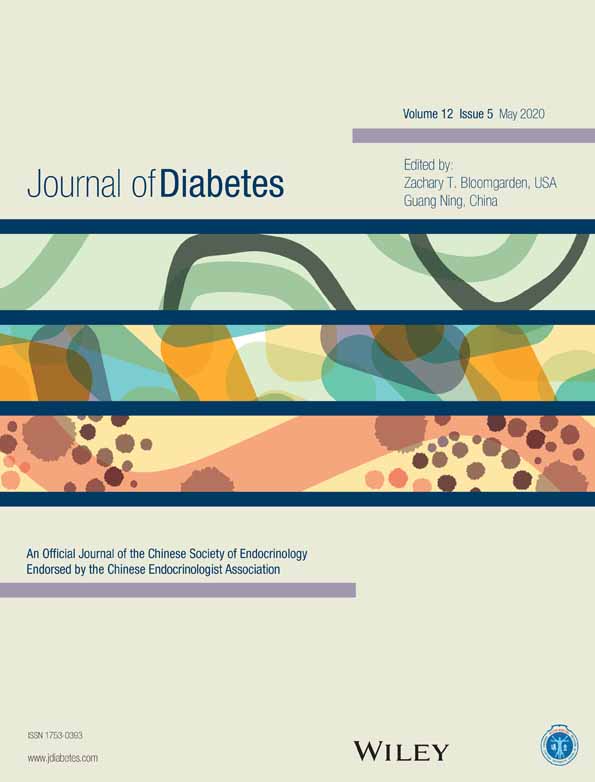Continuous subcutaneous insulin infusion reduces the risk of postoperative infection
持续皮下胰岛素输注降低术后感染风险
Funding information: the Integrated Innovative Team for Major Human Diseases Program of Tongji Medical College, Huazhong University of Science and Technology (HUST); and the Ministry of Science and Technology of the People's Republic of China, Grant/Award Numbers: 2016YFC0901203, 2016YFC0901200; National Nature Science Foundation of China, Grant/Award Numbers: 81570740, 81974109
Abstract
enBackground
Perioperative hyperglycemia was associated with postoperative infection, and proper management of perioperative glucose has become critical in improving the prognosis of patients.
Methods
A total of 1015 diabetic patients who underwent surgery and received insulin treatment for their hyperglycemia in our hospital were retrospectively reviewed. According to propensity matching, we obtained 253 pairs of patients from the group which received continuous subcutaneous insulin infusion (CSII) therapy (CSII group) and the group which received insulin injection therapy (non-CSII group). Perioperative glucose levels and corresponding outcomes were compared between the two groups.
Results
Compared with the non-CSII group, the CSII group had lower fasting and mean glucose levels, lower incidence of fever (operation day: 18.6% vs 10.2%; P = .014; first postoperative day: 55.1% vs 34.7%; P < .001), a positive rate of postoperative secretion culture (6.3% vs 1.2%; P = .004), and a shorter time of antibiotics use (total antibiotics use: P = .002; postoperative antibiotics use: P < .001) and hospital stays (P < .001). However, there was no difference in the total medical expenditure between the two groups (P = .499). Further analysis showed that CSII therapy was superior to multiple daily insulin injection (MDI) therapy in its effect on infection and other postoperative outcomes when 64 pairs of patients from the CSII group and MDI group were compared.
Conclusions
CSII therapy provides better perioperative glucose control and a lower risk of postoperative infection without increasing the total medical expenditure.
摘要
zh背景
围手术期的高血糖与术后的感染密切相关, 合理管理围手术期患者的血糖已经成为改善患者预后的关键。
方法
本文回顾性分析了在我院接受手术并使用胰岛素控制血糖的1015例糖尿病患者资料。通过采用倾向性配对, 我们获得了253对患者。一组是接受持续皮下胰岛素输注治疗的患者(CSII组), 另一组是接受常规的胰岛素注射治疗的患者(non-CSII组)。比较两组患者围手术期血糖水平和其他相关结局。
结果
与non-CSII组的患者相比, CSII组的患者空腹血糖和平均血糖水平明显改善; 同时, CSII组的患者术后发热率 (手术当天:18.6% vs.10.2%, P=0.014; 术后第一天:55.1% vs. 34.7%, P<0.001)和术后分泌物培养阳性率(6.3% vs. 1.2%, P=0.004)也均下降。此外, CSII 组的抗生素使用时间[包括总体抗生素的使用时间(P=0.002)和术后抗生素使用时间(P<0.001)]和住院天数(P<0.001)均缩短。然而, 两组患者总体的医疗费用没有明显的差异(P=0.499)。此外, 我们还对CSII治疗组和non-CSII治疗中采用每天多次胰岛素注射治疗(MDI)的患者进行了倾向性配对, 共得到64对患者。经过比较发现, 在感染和术后其他指标上, CSII治疗仍然优于MDI治疗。
结论
围手术期患者接收CSII治疗有更好的血糖控制和更低的术后感染风险, 而总体的医疗费用并不增加。




